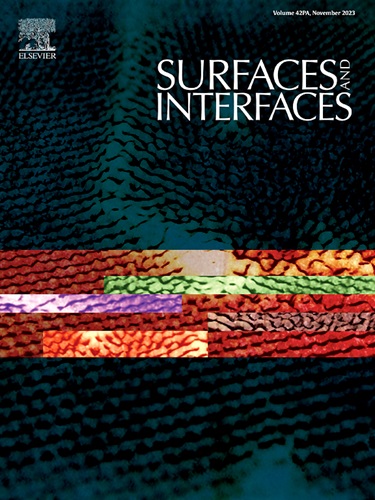聚合物基压电材料:结构、机理、应用及未来趋势
IF 5.7
2区 材料科学
Q2 CHEMISTRY, PHYSICAL
引用次数: 0
摘要
对具有特定功能的材料日益增长的需求激发了人们对压电材料的极大兴趣。本研究探讨了聚合物基压电材料,详细介绍了它们的基本原理、合成、性能和应用。这些聚合物中的压电效应源于分子偶极子的排列,像PVDF这样的半晶体聚合物由于其极性结晶相而表现出优异的压电响应。采用各种合成和制造技术来生产具有特定性能的聚合物基压电材料。具体来说,溶液铸造可以精确控制薄膜形态和结晶相,而旋转涂层和喷涂涂层等涂层方法有助于在各种基材上生产薄膜。静电纺丝用于制造具有高表面积和增强β相形成的纳米纤维,熔体加工为大面积应用提供了可扩展性。增材制造也正在成为一种有前途的技术,用于制造复杂的压电结构。压电聚合物在柔性电子产品、可穿戴设备和智能材料等应用中越来越重要,并有可能推动医疗保健、环境监测和人机界面等领域的创新。关键的挑战仍然存在,包括与陶瓷相比,聚合物的压电系数相对较低,以及实现最佳压电相和均匀纳米颗粒分散相关的复杂性。未来的研究应优先考虑开发新的聚合物材料,通过纳米复合材料增强压电性能,简化加工技术以克服这些限制并扩大其工业和商业用途。本文章由计算机程序翻译,如有差异,请以英文原文为准。
Polymer-based piezoelectric materials: Structure, mechanism, applications, and future trends
The increasing need for materials with specific functionalities has spurred significant interest in piezoelectric materials. This study examines polymer-based piezoelectric materials, detailing their fundamental principles, synthesis, properties, and applications. The piezoelectric effect in these polymers originates from the alignment of molecular dipoles, with semi-crystalline polymers like PVDF demonstrating superior piezoelectric responses due to their polar crystalline phases. Various synthesis and fabrication techniques are employed to produce polymer-based piezoelectric materials with tailored properties. Specifically, solution casting enables precise control over film morphology and crystalline phases, while coating methods like spin coating and spray coating facilitate the production of thin films on various substrates. Electrospinning is used to create nanofibres with high surface area and enhanced β-phase formation, and melt processing offers scalability for large-area applications. Additive manufacturing is also emerging as a promising technique for creating complex piezoelectric structures. Piezoelectric polymers are finding increasing importance in applications such as flexible electronics, wearable devices, and smart materials, with the potential to drive innovations in areas like healthcare, environmental monitoring, and human-machine interfaces. Key challenges remain, including the relatively low piezoelectric coefficient of polymers compared to ceramics and the complexities associated with achieving optimal piezoelectric phases and uniform nanoparticle dispersion. Future research should prioritize the development of new polymer materials, enhancing piezoelectric performance through nanocomposites, and simplifying processing techniques to overcome these limitations and expand their industrial and commercial use.
求助全文
通过发布文献求助,成功后即可免费获取论文全文。
去求助
来源期刊

Surfaces and Interfaces
Chemistry-General Chemistry
CiteScore
8.50
自引率
6.50%
发文量
753
审稿时长
35 days
期刊介绍:
The aim of the journal is to provide a respectful outlet for ''sound science'' papers in all research areas on surfaces and interfaces. We define sound science papers as papers that describe new and well-executed research, but that do not necessarily provide brand new insights or are merely a description of research results.
Surfaces and Interfaces publishes research papers in all fields of surface science which may not always find the right home on first submission to our Elsevier sister journals (Applied Surface, Surface and Coatings Technology, Thin Solid Films)
 求助内容:
求助内容: 应助结果提醒方式:
应助结果提醒方式:


